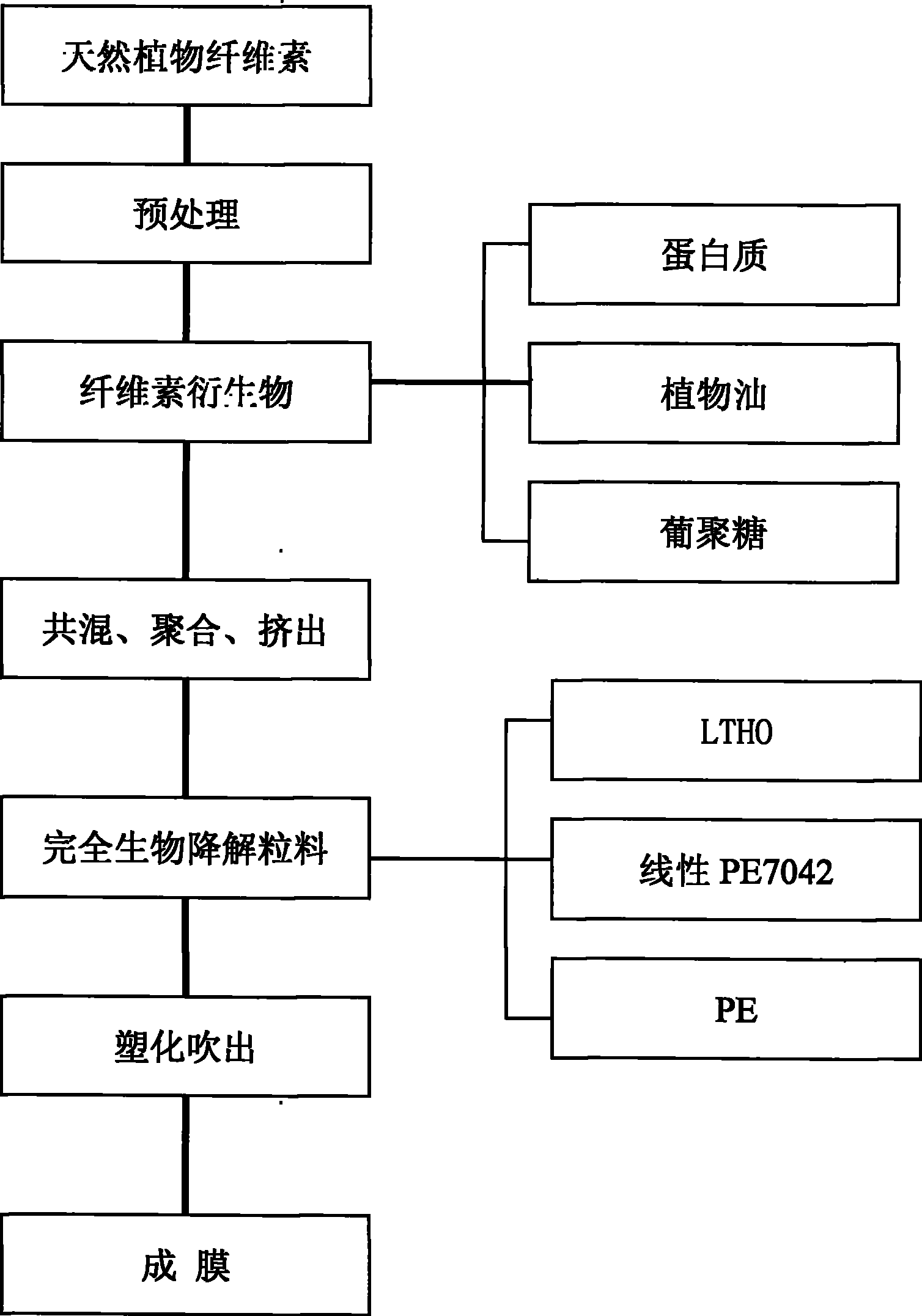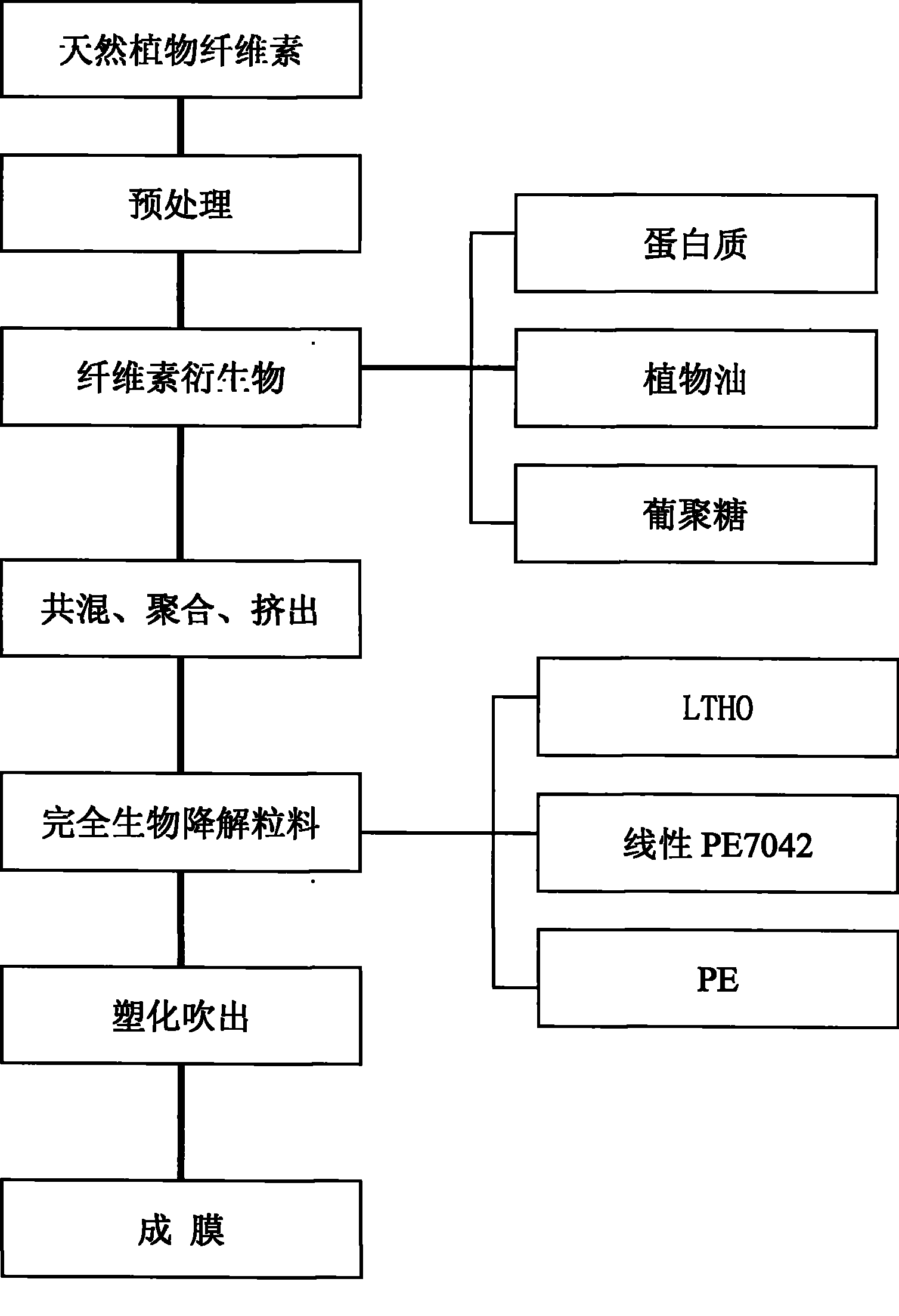Biodegradable natural plant cellulose material
A natural plant and biodegradable technology, applied in the field of biodegradable materials, can solve the problems of non-biodegradable environmental pollution
- Summary
- Abstract
- Description
- Claims
- Application Information
AI Technical Summary
Problems solved by technology
Method used
Image
Examples
Embodiment 1
[0028] Embodiment 1: biodegradation of natural plant cellulose material, comprising a masterbatch consisting of the following components by weight percentage:
[0029] Derivatives of natural plant cellulose 55%
[0030] Protein 25%
[0031] Vegetable oil 5%
[0032] Dextran 15%
[0033] The above-mentioned derivative of natural plant cellulose is one of cellulose acetate, cellulose propionate, cellulose butyrate or cellulose acetate butyrate.
[0034] The production process is as follows:
[0035] In order to obtain one of the above-mentioned derivatives of natural plant cellulose, the corresponding natural plant cellulose is firstly pretreated, and the pretreatment process is to ferment and dry the corresponding natural plant cellulose. After pretreatment, derivatives of natural plant cellulose, such as cellulose acetate, are obtained.
[0036] Then 55% by weight of cellulose acetate, 25% of protein, 5% of vegetable oil, and 15% of dextran are processed through blending,...
Embodiment 2
[0049] Embodiment 2: Biodegradable natural plant cellulose material, is made up of the following components by weight percentage:
[0050] Derivatives of natural plant cellulose 50%
[0051] Protein 30%
[0052] Vegetable oil 3%
[0053] Dextran 17%
[0054] The above-mentioned derivative of natural plant cellulose is a mixture of cellulose acetate and cellulose propionate.
[0055] The production process is as follows:
[0056] First, the corresponding natural plant cellulose is pretreated, and the pretreatment process is to ferment and dry the corresponding natural plant cellulose. After pretreatment, a mixture of cellulose acetate and cellulose propionate, a derivative of natural plant cellulose, is obtained.
[0057] Then, the cellulose acetate, protein, vegetable oil, and dextran in the above weight percentages are processed through blending, polymerization, extrusion, etc. to obtain a granular masterbatch.
[0058] Finally, the granular masterbatch is plasticized a...
Embodiment 3
[0059] Embodiment 3: biodegradation of natural plant cellulose material, comprising a masterbatch consisting of the following components by weight percentage:
[0060] Derivatives of natural plant cellulose 60%
[0061] Protein 20%
[0062] Vegetable oil 2%
[0063] Dextran 18%
[0064] The above-mentioned derivative of natural plant cellulose is a mixture of cellulose propionate and cellulose butyrate.
[0065] After obtaining the above masterbatch, add auxiliary materials according to the following weight percentages to plasticize and blow out film products:
[0066] LTHO additive 0.15‰
[0067] Linear PE7042 10%
[0068] PE 35%
[0069] Masterbatch 54.085%
[0070] The manufacturing process is as in Example 1 or completed with the existing technology.
PUM
| Property | Measurement | Unit |
|---|---|---|
| thickness | aaaaa | aaaaa |
| elongation at break | aaaaa | aaaaa |
| transmittivity | aaaaa | aaaaa |
Abstract
Description
Claims
Application Information
 Login to View More
Login to View More - R&D Engineer
- R&D Manager
- IP Professional
- Industry Leading Data Capabilities
- Powerful AI technology
- Patent DNA Extraction
Browse by: Latest US Patents, China's latest patents, Technical Efficacy Thesaurus, Application Domain, Technology Topic, Popular Technical Reports.
© 2024 PatSnap. All rights reserved.Legal|Privacy policy|Modern Slavery Act Transparency Statement|Sitemap|About US| Contact US: help@patsnap.com









